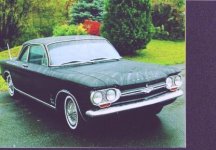TresCrows
Elite Member
It was put in originnaly to boost octane. It is one of several octane boosting ingrediants. The only remaining commonly available gasoline containing lead is 100LL aviation fuel. It may be called low lead but it contains a fair amount of lead but when compared to overall fuel useage it has such a low impact on the environment that it has been allowed to remain. It is dyed blue and has other differences from auto fuel as well. The older green stuff of the same octane had even more lead. There is a new spec for av gas but it will be slow working into the market when it becomes accepted. The newer engines such as my IO360 have no more need for lead as a valve lubricant than a car but they do need the octane benefit when run at full rated power. I figure somewhere down the road I will have to install a FADEC, full authority digital engine control.
Yeah, Amoco sold unleaded fuel and old folks called it white gas but I always thought white gas was a lamp/stove fuel with somewhat different chemistry than actual gasoline. I always used Amoco as did my dad till all fuels became "white gas." I remember buying it at the old boat dock a few miles down from where we lived for my antique Johnson outboard that powered my little pirogue. The lead in auto fule fouled the plugs badly.
In a perfect world there would be no metal to metal contact, open an engine up and you will see evidence the world is not perfect. Engine start up, detonation, lugging and a variety of other things can produce metal to metal contact. Not to start an oil thread but it is always said there is no evidence of oil related failures so any oil is good--I have seen such failures that were oil related.
The crank bearings on most engines are a material called babbit or other similar compounds. Only two stroke engines and some high performance engines and some motorcycle engines have ball bearings on the crank---that I have seen anyway. Well, not all two strokes have ball bearings either, my old Johnson was babbit material also. Oil flows under pressure into the journal and the crank floats on a film of oil. Anything that disturbs that film is bad for your engine /forums/images/graemlins/shocked.gif. Now what kind of cheapo oil you use(generic you)? J
Yeah, Amoco sold unleaded fuel and old folks called it white gas but I always thought white gas was a lamp/stove fuel with somewhat different chemistry than actual gasoline. I always used Amoco as did my dad till all fuels became "white gas." I remember buying it at the old boat dock a few miles down from where we lived for my antique Johnson outboard that powered my little pirogue. The lead in auto fule fouled the plugs badly.
In a perfect world there would be no metal to metal contact, open an engine up and you will see evidence the world is not perfect. Engine start up, detonation, lugging and a variety of other things can produce metal to metal contact. Not to start an oil thread but it is always said there is no evidence of oil related failures so any oil is good--I have seen such failures that were oil related.
The crank bearings on most engines are a material called babbit or other similar compounds. Only two stroke engines and some high performance engines and some motorcycle engines have ball bearings on the crank---that I have seen anyway. Well, not all two strokes have ball bearings either, my old Johnson was babbit material also. Oil flows under pressure into the journal and the crank floats on a film of oil. Anything that disturbs that film is bad for your engine /forums/images/graemlins/shocked.gif. Now what kind of cheapo oil you use(generic you)? J

